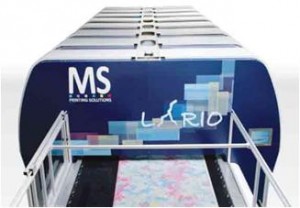To read the full article, please login. The full content of this article and all premium articles is available exclusively for site members.
Site membership is free. If you are an existing user, please login. New users may register below.
3D printing of textiles – part 1. Haute Couture and technical challenges
3D printing of textiles – part 1. Haute Couture and technical challenges 3D printing is a technology hype. 3D printers can print almost anything from car and airplane parts, toys and even food. The number of industries utilizing 3D printing is expansive, covering everything from aerospace and defense to automotive, healthcare, entertainment, consumer and architecture. Scientists started printing human hearts[1] and ESA, the European Space Agency, is seriously thinking about 3D printing a space station on the moon[2] 3D printing is seen as potential technology breakthrough that may radically change manufacturing processes in many industries, put whole business models at question and create new ones. However, in textile manufacturing 3D printing is still at a tiny niche and exploratory stage. The textile industry, is a mature and cost efficient global manufacturing industry. Undoubtedly, 3D printing of textile would be a radical change of the traditional textile manufacturing techniques, for spinning & weaving as well as for the colouration industry. Not to speak about the production as a whole. Since there is hardly any more labour and much less waste, 3D printing of customized fashion would probably be in Europe and America´s textile print shops, creating new business models, rather than textiles manufacturing in industrial suburbs of China and India. And while 3D printing will most likely influence fashion through homemade gadgets and through designers´ blogs, real revolutionary stuff is happening in Haute Couture, and some innovative start-ups have entered the scene. Some of the highlights include Victoria´s Secret model started wearing 3D printed wings [3] 3D-printed dress for the icon burlesque dancer Dita Von Teese[4], created by designer Michael Schmidt and architect Francis Bitonti Iris van Herpen, a Dutch fashion designer, created a 3D printed dress[5] based on a multimaterial 3D-printing technology, allowing a variety of material properties, both hard and soft, In 2011 the famous TIME Magazine named Iris van Herpen’s 3D printed dress one of the 50 Best Inventions of the year 2011 Continuum´s 3D printed bra[6] is made from nylon 12, and claimed to be “the world’s first ready-to-wear, completely 3D-printed article of clothing”, created by the SLS (selective laser sintering) 3D printing process. All of the pieces, closures included, are made directly by 3D printing and snap together without any sewing. Titanium 3D printed shoes[7] by designer Bryan Oknyansky, as well as an entire line of fully customizable 3D printed chunky platform high heels made from eco-friendly bioplastic. Consumers can have a truly custom shoe made for them in different colours. Tamicare´s Cosyflex, high-end fashionable, disposable hygiene products and underwear. Cosyflex is a hybrid shape retaining nonwoven structure of at least two layers, based on a unique combination of natural elastomer (rubber-latex polymers) and cellulose fibres (“various types of liquid polymers such as natural latex, silicon, polyurethane and teflon, as well as variety of textile fibres such as cotton, viscose and polyamide”) to build up the fabric/product while using Tamicare’s unique forming process[8]. There are reports about talks with Victoria’s Secret about 3D printing 10 million pairs of



